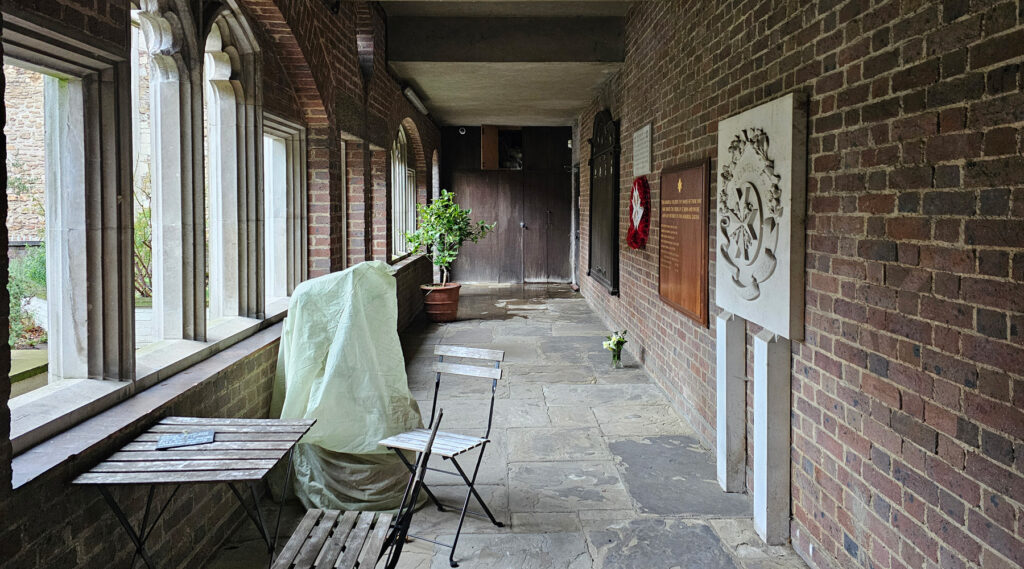This is an easy to miss garden in Clerkenwell hidden away behind a high wall and although it looks like its part of the neighbouring church, it’s actually fairly modern — the result of post WWII clearance.
There’s been a church on the site though back to the 18th-century, but closed as a parish church in 1931 and was gifted to the worldwide Order of Saint John (chartered 1888) to be its main English chapel.
They didn’t get to enjoy it for long as WWII gutted the church and destroyed most of the buildings next to it on the southern side. The current church on the site was built in 1951-8 by architects John Seely and Paul Paget, retaining the original medieval crypt in the basement.
However, the bombing cleared away the cluster of buildings next to the church, and this space is now a garden. The current design is also fairly new, dating to 2011 when the London based garden designer, Alison Wear revamped the pocket park from a plain lawn into a space that reflects the medical history of the church occupants.
Although it traces its history to the Knights Hospitaller in the Middle Ages, the modern Order of Saint John was founded in 1888, and also created the St Johns’ Ambulance.
So, here we have a formal garden that’s also packed full of medicinal plants, reflecting how the Order of St John has promoted health charities. Quite appropriately for the location, you can find signs noting the medicinal plant they’re next to such as St John’s Wort, Jerusalem Cross or Rosa St John.
The garden structure also looks back at how many medieval gardens were laid out, roughly in four areas bisected with stone paths. It is called a “paradise garden” and is supposed to encourage relaxation and contemplation as you wander around it.
In the centre is an olive tree, said to be over two hundred years old and transplanted here from Jerusalem.
A cloister at the rear of the garden gives a bit of respite from the rain, if you visited on a rainy day as I had, and also contains a number of memorials to those who died in the service of the Order.
There’s several benches, and tables, with signs on asking people to put them back if they move them so that the garden can remain accessible to those using wheelchairs. A nice touch, if rather overlooking the issue that a person has to go up and down some steps to get into the garden.
There’s also a mini-library by the garden entrance where you can borrow books to read while relaxing in the garden. On a dry day at least.
The Cloister Garden is open Monday to Saturday 9:30am to dusk, except when a private event is taking place.













Leave a Reply